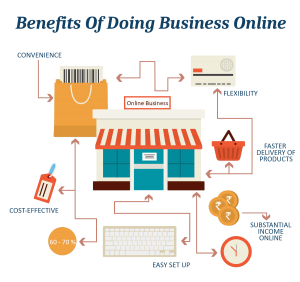These days, most businesses realize the importance of content marketing. However, given the dismal state of many business blogs, it’s also readily apparent that while the majority of organizations have a vague idea of the necessity of inbound marketing, there are still many that have absolutely no clue as to how to successfully implement it. Let’s take a look at the corporate blog, and review a few strategies that may help you get the word out on topics that your customers care about, and might even further your business in the process. Here are five tips:
1. Be Useful and Relevant
This point is at the very heart of content marketing. After all, if you’re not providing helpful, engaging, or entertaining posts on your company blog, then no one is going to bother giving it their time or attention. You should start by identifying a problem. What is it that troubles your potential customers? What solutions do they need? Be sure that you’re addressing real problems, rather than creating new ones just so that you can promote your business. Trust us, if you provide a useful resource for your consumer, then your business will prosper—whether or not that resource happens to double as an advertisement. If you don’t know where to start, consider checking out a few successful company blogs such as those run by Oreo (which manages to maintain an almost uncanny familiarity with what its readers consider important) or the Vivint blog extension called “The Neighborhood” (which is a great site that has useful, socially shareable tips and ideas homeowners can use to improve their lives and homes).
2. Get Clever
Sometimes, it’s not about what you say; it’s about how you say it. Focus on the language used in your content. Is it accessible to laypeople who might just be stopping by? Does it take a conversational tone? Is it entertaining, while also being enlightening? If not, then chances are that it’s not going to go very far, even if it does provide helpful advice. We’re not suggesting that you need to be a comedian in order to create successful content, but you should definitely know how to turn a phrase. Additionally, don’t underestimate the power of a good headline. Simply describing the main points of your post (“Five Tips on Properly Irrigating Your Garden in the Summer”) may let people know what you’re offering, but it won’t stand out from the other returns on a search results page quite as well as something with an interesting title (“A Hose By Any Other Name: Keeping Your Garden Wet Under the Summer Sun”). If you want to learn to make a successful, viral-worthy title, look no further than Buzzfeed.
3. Make it Visual
It’s been suggested by some (i.e. about ten thousand sites on the internet) that the human brain processes visual stimuli 60,000 times faster than it does text. Whether or not that figure is 100 percent accurate, it does make a good case for relying on images and graphics where possible. Think about it. If you were to walk into a backyard and see a snarling doberman pinscher bearing its teeth in your direction, and alongside it a posted sign that read “Beware of dog,” are you going to even bother reading the warning before you hop the fence and make a run for it? Well, it’s the same with content marketing. Yes, you could provide a detailed step by step description of how to perform a specific task, but if you decide to supplement it with a video or an infographic, you’ll find that its sharing potential jumps through the roof.
4. Show Them the Way
If you want people to share your posts, then you need to give them an easy way to do so. Basically, this boils down to providing social share buttons with which a reader can quickly post your article to their own favorite social media platforms. Be sure to position the buttons in easy-to-find locations (such as at the top of the page, end of the post, or along the side), and make sure to include every possible platform that a potential reader might favor—you may not be a fan of pinterest, but don’t let that bias prevent a reader from pinning your work.
5. Allow Comments and Conversation
Blogs are unlike many other forms of communication, in that they allow you to remain part of the conversation long after the content itself has been distributed. As such, many readers will want to share their experience with you after reading your content, and will do this through comments. This is an invaluable opportunity for you to connect with interested customers. Be sure to provide a comments section, and to keep an eye on it once your content is published. When readers see that you’re invested enough in what you create, then they’ll be more willing to check back in the future to see what new insights you might be sharing. If you’re able to perfect this final tip, then you won’t have to worry about finding engaged readers who are willing to share your blog; they’ll find you.
Read more on Promotion World (press release)
(1015)







